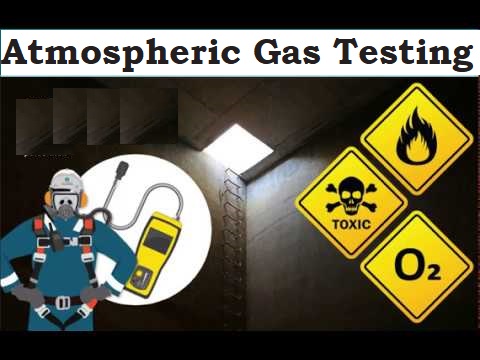Atmospheric
Gas Testing - AGT
Excavation & Trenching Safety Guide Pictorial
TOOLBOX TALK MEETING TRAINING PROCEDURE -
Confined
space activities are life threatening and gas testing plays a vital role. Atmospheric
gas testing(AGT) within confined spaces shall include, but not be limited to,
testing for oxygen (O2), flammable mixtures (Lower Explosive Limit [LEL]) toxic
gases (e.g., H2S), and carbon monoxide (CO).
When atmospheric
gas tests shall be performed and immediately recorded:
ü Prior to entry.
ü After breaks or other interruptions
in the work activities.
ü If there is any reason to believe
that conditions inside the confined space have changed.
ü At periodic intervals (e.g., every 2
hours) as necessary to determine whether acceptable atmospheric conditions are
being maintained during the course of the confined space entry.
Atmospheric
gas tests shall only be conducted by a certified gas tester.
HEIGHT WORK | WORK AT HEIGHT DO'S
Mechanical Ventilation
- Initial gas testing prior to entry shall be performed with all mechanical ventilation
shut down at least 15 minutes prior to testing.
Unacceptable
Levels - Initial entry shall be prohibited if gas testing indicates an oxygen deficiency
or the presence of unacceptable levels of flammable (LEL) or toxic materials,
etc., within the confined space. Only after purging with mechanical ventilation
and/or cleanup has rendered the space free of hazardous concentrations (as
verified by continuous gas testing inside the confined space) shall initial
entry be allowed.
Additional
gas testing (e.g., after breaks) shall be conducted with the ventilation system
turned on to ensure that contaminants are being removed and that the
ventilation system is not a source of contamination.
Personal
Gas Monitors - Continuous gas testing (e.g., by use of personal gas monitors)
shall be used if the atmosphere inside the confined space is subject to change
or if confined space entry activities involve combustion (e.g., welding or
torch cutting).
Electrical Work | Permit To Work (PTW)
Evacuation
of Personnel - Whenever a hazardous atmosphere is detected, the confined space
shall be evacuated of all personnel until corrective actions have been taken
and it has been verified that the confined space is safe for reentry.
Welding/Torch
Cutting - Hot work activity shall not be permitted if the atmosphere is above
0% of the LEL.
The
following environments are required prior to entry into or work inside a confined
space:
A. No atmosphere-supplying
respirator is required if:
· Oxygen (O2) concentration is at or
above 20.0% and less than or equal to 23.5%.
· Flammable/combustible mixtures are
less than 5% of the LEL.
· Carbon monoxide (CO) is less than 35
parts per million (ppm).
· Hydrogen sulfide (H2S) is less than
10 ppm.
· Other potential toxic gas
concentrations are below their threshold limit value (TLV).
Free Download Excavation Entry Checklist
B. An
atmosphere-supplying respirator shall be continuously worn if:
Ø O2 concentration is less than 20.0%.
Ø Flammable/combustible mixtures are at
or above 5% and less than 10% of the LEL.
Ø CO concentration is at or above 35
ppm and less than 1,000 ppm.
Ø H2S concentration is at or above 10
ppm and less than 100 ppm.
Ø Other potential toxic gas
concentrations are above their designated TLV and at or below their IDLH level.
C. Confined
space entry is not permitted at concentrations above 23.5% O2, at or above 10%
LEL, above 1,000 ppm CO, above 100 ppm H2S, or above the Immediately Dangerous to
Life or Health (IDLH) of any other potential toxic gas.





No comments:
Post a Comment